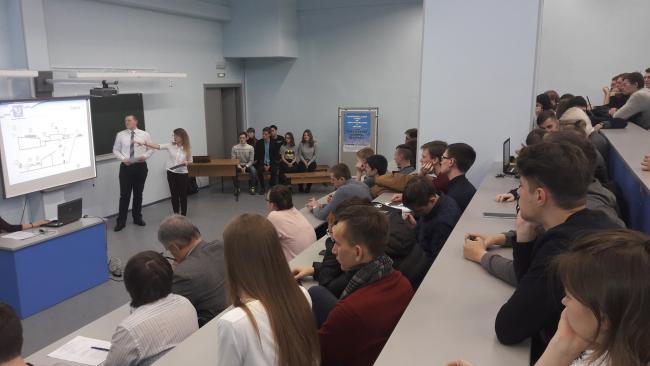Vitaly Lisovsky, Dean of the Faculty says:
The idea of project-oriented education at the Faculty of Technology, Engineering and Design appeared several years ago, long before the project activity became mainstream. Top universities worldwide have already successfully practiced suchlike training; thus, it’s not a surprise, the leading Russian universities began to master advanced technologies as well.
Vitaly Lisovsky, Dean of the Faculty of Technology, Engineering and Design explains:
- We decided to move to action after visiting the Moscow Polytechnic Institute, which has been successfully implementing the principles of project training since 2014.
However, we adopted their experience in accordance with our resources, traditions, and tasks.
- When it was decided to begin?
- From the first academic year. It seemed most expedient for us to introduce project activities from the very beginning. As you know, the first year students don’t have professional skills, so there is no point in expecting complex engineering tasks fulfillment from them. We decided to set a common goal for everyone; that is to build a Goldberg machine.
- Could you explain what kind of construction is this?
- The Goldberg machine is a complex construction of ordinary materials, which are used in an unordinary way. They are connected in a certain way, so that a chain of various actions could perform some simple task, for example, turn on the light bulb or blow up a party popper. Actions follow one another in a chain, like in a domino effect, and without stopping; so diversity and effectiveness of the finale depends only on the imagination of the creator.
- What was the purpose of this assignment?
- Such a task, in our opinion, allows the students to demonstrate their creative abilities, to gain skills in working with tools, and to contribute a lot to team building. Frankly speaking, this is an introduction to project activities.
- How was this work organized?
- We divided students into 12 groups, each of 9-11 people. Each group included students from different areas of training; that was essential.
Each group created its own project within 6 weeks. Students independently organized their joint work. Teachers, acting as curators, had to avoid prompting, advice, ready-made solutions - their task was only to provide the students with audiences, projectors, flipcharts, markers and others.
Last November a large presentation of projects was organized. During this event, on the one hand, students shared their experience gained within joint activities and, on the other hand, had a possibility to get professional comments and valuable advice.
In addition, each project received its evaluation. For us as organizers this was necessary, first of all, in order to estimate the resources required to manufacture machines.
- Was there any continuation of the work after presentations?
- Of course. In the following weeks, students were engaged in finalizing their projects and manufacturing their machines in the Faculty laboratories. On December 5, 2017 a final demonstration of machines was held. They had 4 hours to install equipment, after which a demonstration of the works was held one by one. It was a lively event! It gathered a large number of spectators, including "fans" from not only our faculty.
- So, what's next?
- For a spring semester we formed a set of projects. It includes projects of varying complexity. All of them will be realized under the guidance of teachers of Vyatka State University and specialists of partner enterprises.
The students have already chosen topics of interest. At the moment the process of conceptual design has been launched. We are planning a public demonstration of prototypes at the beginning of June.

